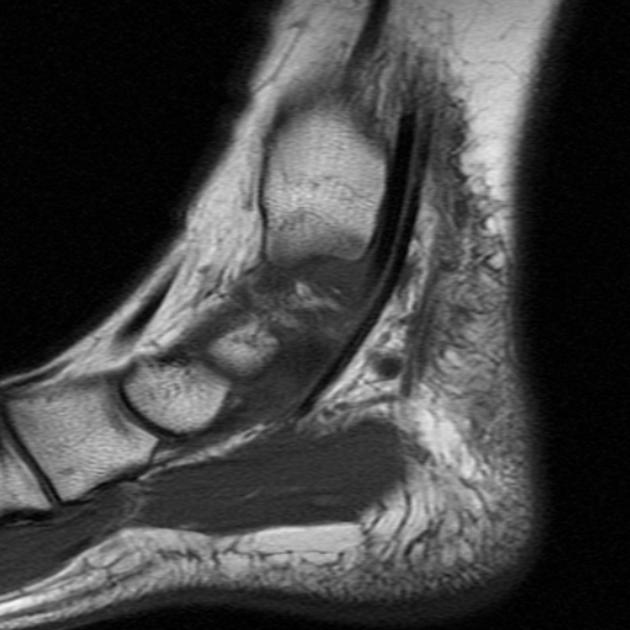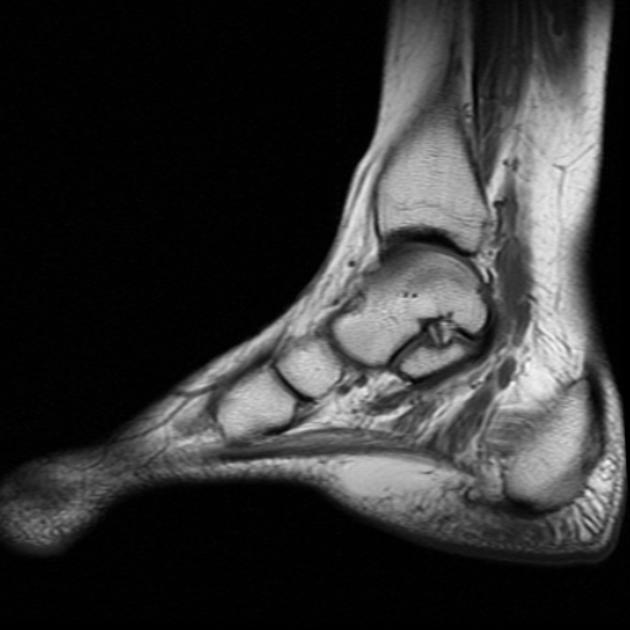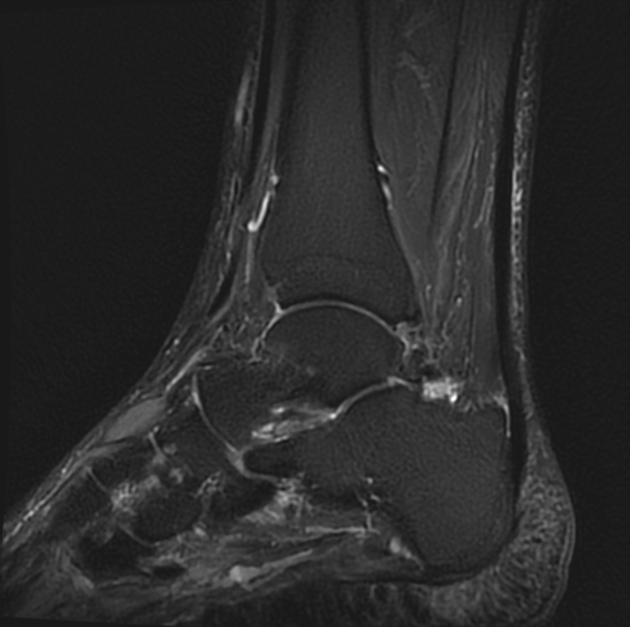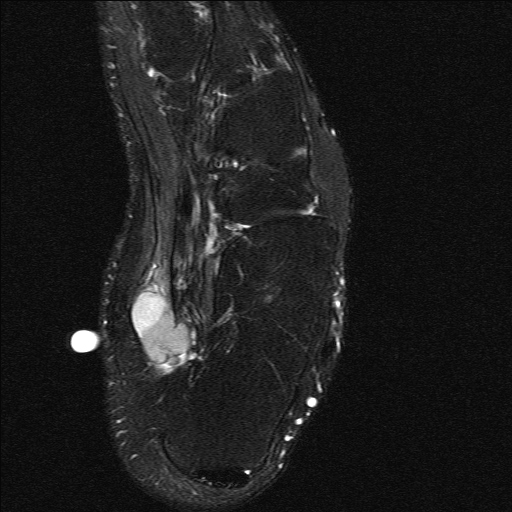Tarsal tunnel syndrome refers to an entrapment neuropathy (tunnel syndrome) of the (posterior) tibial nerve or of its branches within the tarsal tunnel. This condition is analogous to carpal tunnel syndrome.
On this page:
Clinical presentation
The most common symptoms are pain and paraesthesia in the toes, sole, or heel and the main finding at physical examination is the Tinel sign (distal paraesthesias produced by percussion over the affected portion of the nerve). Tarsal tunnel syndrome is usually unilateral.
Electromyography and nerve conduction studies are useful in confirming the diagnosis.
Pathology
Because the tarsal tunnel is a tight space, volume-occupying lesions can cause symptoms.
Aetiology
idiopathic / no cause identified (40-50% cases) 1,7
bone deformity after calcaneal fractures
varicosities
tenosynovitis of the flexor tendons
tumours, e.g. schwannoma 6, lipoma
accessory or hypertrophied abductor hallucis muscle
synovial hypertrophy
post-traumatic fibrosis
Radiographic features
Ultrasound
May be able to demonstrate the presence of some of the aetiological factors listed above.
MRI
MR imaging clearly depicts the bones, soft-tissue contents, and boundaries of the tarsal tunnel as well as the different pathologic conditions responsible for tarsal tunnel syndrome.
MR imaging can also aid in determining whether treatment should be conservative (e.g. tenosynovitis) or surgical (e.g. space-occupying lesions).
Treatment and prognosis
Conservative management - orthosis, local injection, anti-inflammatory medications, and tricyclic antidepressants (TCA).
Surgical management - decompressive surgery.
History and etymology
The term was first described by C Keck and S J S Lam in 1962 3.








 Unable to process the form. Check for errors and try again.
Unable to process the form. Check for errors and try again.